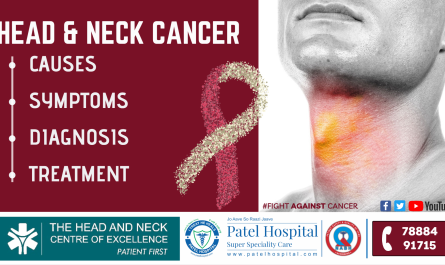Dr. Naveen Khanna, DM, Cardiologist, Patel Hospital, Jalandhar
Irregular pulse or heart beat is a frequent problem in patients coming to cardiology clinics.
Atrial Fibrillation (AF) is one of the most common cardiac arrhythmia seen in such patients. In this problem there is chaos in the electrical activity of the receiving chambers (atria) of the heart leading to irregular beating of the pumping chambers (ventricles) of the heart. AF is associated increased risk of stroke, heart failure, hospitalizations, and death.
It is estimated that AF will effect up to 3% of the population by the year 2050. After the age of 40years one out of four persons will develop AF during their remaining life time. The incidence of AF increases with age, It is uncommon before the age of 70 but rises exponentially after that. It is also important to recognize that the subclinical or asymptomatic AF is common (approximately 30%) and not infrequently presents as stroke (paralytic attack). Hence it is important to focus on screening of AF, identifying underlying heart disease and precipitating factors, optimally treat the underlying disease, finally perform risk stratification for stroke and other thromboembolic complications. By means of pulse palpation any nurse or physician should perform opportunistic screening for AF. If AF is suggested or if the patient has complaints of palpitations or other AF- associated symptoms like breathlessness, a cardiologist opinion and ECG is needed to verify the diagnosis. AF symptoms may include palpitations, breathlessness, chest pain and dizziness and less commonly presyncope and syncope. Also symptoms may change over time in the individual patient. AF may be self- limiting (paroxysmal), or persistent, or permanent. Most of the patients with new- onset AF should be consulted by a cardiologist at least once.
Risk Factors and Economic Burden
Atrial Fibrillation is commonly seen in conjunction with cardiovascular disease, hypertension, diabetes, smoking disorders thyroid disorders, snoring alcohol intake and obesity although it may occur in so came the presence of AF is associated with an increase in mortality Moreover it affects the quality of life and leads to numerous emergency visits and hospitalizations. Thus increasing cost further. Current estimates suggest that the burden of AF will continue to increase over the next few decades, with estimates varying between a three- to sevenfold increase in the number of patients with AF by the 2050.
Irregular rhythm of heart predisposes to clot formation in heart chambers which may fly to other body parts along with pumped out blood and hence may cause damage to the target organ , most drastic being the brain leading to acute stroke or paralytic attack. AF increases the risk of stroke by three- to fivefold. Moreover paralytic strokes associated with AF are also more severe, resulting in a higher likelihood of dying and also longer hospital stays, more neurological damage, and greater disability.
Role of Alcohol
AF is the most common arrhythmia related to Alcohol abuse. Acute alcohol overdose also provokes sudden onset AF or so called ‘Holiday Heart Syndrome.’ It is generally believed that caffeine may cause palpitations and increase the risk of cardiac arrhythmias. However, several large population studies have revealed that regular caffeine use does not increase the risk of AF
Smoking and illicit drugs may increase the risk of AF. AF is known to increase the risk of sudden
Cardiac death independently of other cardiovascular risk factor.
Treatment
Treatment of AF required use of anticoagulants (blood thinners). One group constitutes Vitamin K antagonists like Warfarin. Warfarin requires careful laboratory monitoring and clinical follow up in order to maintain the INR in the target therapeutic range. Major bleeding occurs in 1-3% of AF patient receiving warfarin. Warfarin is subject to multiple food and drug interactions and so the patient needs to be careful in taking certain drugs and food materials. Newer anticoagulant drugs are emerging as alternatives to warfarin for the prevention of thromboembolic complications in patients with AF.



